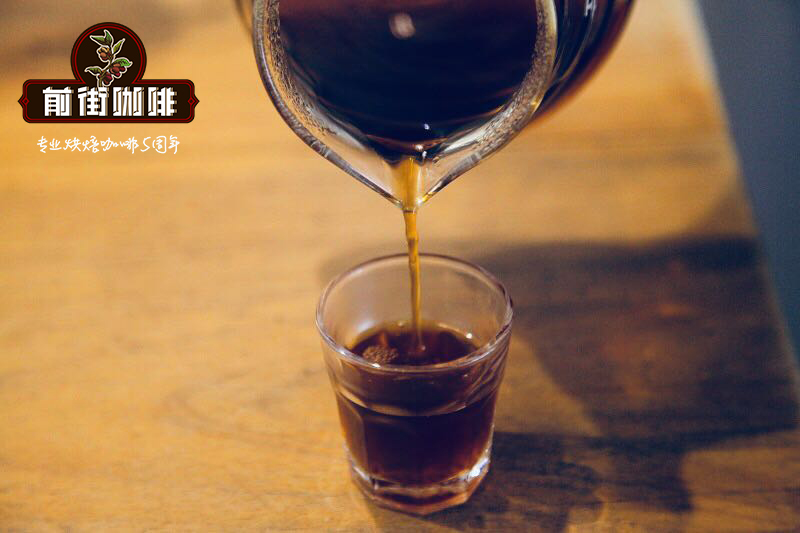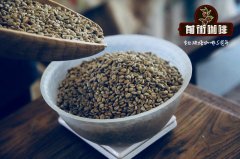The characteristics of Congolese coffee introduces the breeding methods of Congolese coffee beans.

Professional coffee knowledge exchange more coffee bean information please follow the coffee workshop (Wechat official account cafe_style)
Congo coffee: Congo coffee (Coffea congensis Froehn.) Coffee of Rubiaceae. Shrubs, 2-6 m tall, exocarp thin, red at maturity. The fruit is in November. Native to the Congo of Africa, Hainan has a small amount of cultivation.
Characteristics of Congolese coffee: shrubs, 2-6 m tall, branching near base, branches numerous; old branches Terete, with inflated nodes, smooth epidermis, reddish, slender shoots, slightly flat. Leaves thinly leathery, leathery when old, brown, oblong or lanceolate, 8-13 cm long and 3-5 cm wide, apex acuminate or narrowly acuminate, base cuneate or obtuse, both surfaces glabrous, with or without pores in axils of lower veins; lateral veins 6-8 per side; petiole 5-10 mm long; stipules ovate-triangular, 4-5 mm long, basally connate, tip convex.
Cymes 2-4, clustered in leaf axils, each inflorescence with 2-4 fragrant flowers; bracts connate at base, arranged in two whorls, 2 of outer bracts ovate or lanceolate, sometimes triangular, the other 2 oblong, slightly shorter, linear of inner whorl, slightly shorter than outer ones, leaflike, but longer than pedicels and calyx. Berries ovate-oblong, 10-12 mm long, 8-9 mm in diameter, exocarp thin, red at maturity. The fruit is in November.
Propagation methods: Congo coffee is mainly useful seed reproduction, good seeds are the material basis of strong seedlings and high yield. The fruit shape of offspring and the number of fruits on lateral branches tend to be female parents with high yield and good performance. The offspring are also more productive, so it is necessary to collect the fully ripe and full fruits in the full fruit period. after the fruit is selected, remove the peel and pulp in time, remove the pulp gum adhering to the seeds, then rinse with clean water and spread it in a cool and ventilated place. do not expose the sun to the sun and dry it for two days.
L, nursery site selection
Close to water source, convenient transportation, loose soil, loam or sandy loam with good drainage and irrigation, paddy field or dry land with PH value of 6Mel 6.5 as nursery land, and close to coffee garden. After turning the soil 20-30cm deep, hoing fine and removing stones, the ridge moisture is 1-1.2m wide and about 10 m long, and apply rotten and finely crushed farm manure on the soil moisture, 3000 kg per mu. The soil and fertilizer are mixed and used as nutrient soil for bagging. The nutrition bag specification is 15 × 20 cm, cut through the corner of the bag for drainage, put the nutrient soil into the bag, each row of 12 bags neatly placed, upright. 60-70,000 trees can be placed per mu, shade branches are planted at a pile distance of 4 meters, and the shade density is 75% 85% high. The nursery is built with fence protection around.
2. Finishing and sowing of budding bed.
The nursery land that has been hoed and fertilized is spread out according to the spacing of 50cm, soil moisture width of 1.2m and height of 15-20cm. After disinfecting the soil with carbendazim, add 5-10cm thick river sand. Fubang Village planted 7963 new varieties, about 5000 seeds per kilogram, soaked in 40-45 ℃ warm water for 24 hours, and sowed the seeds evenly on the sand bed so as not to accumulate. Sowing rate is 0.5-0.6 kg / m2, press into the sand with wood, cover 1-2 cm of river sand, then cover the surface with straw and water thoroughly. The seeds were unearthed 80 days after sowing, and the seeds should be watered regularly before being unearthed to prevent drought, and the grass should be uncovered in time after the seedlings were unearthed.
3. Seedling management and transplanting nutrition bag
Pest control should be carried out before transplanting and bagging. Carbendazim and methyl thiophanate should be used to control seedling blight and dimethoate should be used to control diseases and insect pests. When the cotyledons of young seedlings are fully unfolded, they can be bagged. Soak the seedlings with water before pulling out the seedlings, reduce the mechanical damage to the roots of the seedlings, select small seedlings with stable cotyledons and strong seedlings, hold 10 cm of water in containers such as buckets or pots, put the seedlings neatly into the containers for preservation, and drench the nutrition bags full of nutritious soil with water before transplanting seedlings. After the seedlings are inserted into the nutrition bags, the roots are required to be straight. Root water is poured immediately after planting. During the nursery period, attention should be paid to the removal of weeds and prevention of diseases and insect pests. Human and animal feces and urine 2Mel were applied three times, poured with water at the proportion of 1:3, and foliar spray of 0.5% Yunda 120. When the plant height was 15 cm, 5 pairs of true leaves could be transplanted, and the seedlings should be refined for 3 weeks before transplanting.
Important Notice :
前街咖啡 FrontStreet Coffee has moved to new addredd:
FrontStreet Coffee Address: 315,Donghua East Road,GuangZhou
Tel:020 38364473
- Prev

Introduction of Java Coffee characteristics introduction of taste and flavor of Java coffee beans
Professional coffee knowledge exchange more coffee bean information please follow the coffee workshop (Wechat official account cafe_style) Java Coffee: Java Coffee is produced in Java Island, Indonesia, belonging to Arabica coffee. After baking, the bitter taste is extremely strong and the aroma is very light, without sour taste. The bitterness and mellowness of Java coffee, coupled with the sweetness of chocolate syrup, make Java coffee more mellow and palatable and very popular with women!
- Next

East Timor Coffee Taste Flavor East Timor Coffee Bean Characteristics
Professional coffee knowledge exchange More coffee bean information Please pay attention to Coffee Workshop (Weixin Official Accounts cafe_style) East Timor Coffee: East Timor is most famous for organic coffee. Interestingly, this is related to the deteriorating public security of the independence movement, because chemical fertilizers and pesticides cannot be transported into remote coffee fields. Coffee farmers almost do not spray pesticides and plant all natural organic fertilizers. statistics
Related
- Beginners will see the "Coffee pull flower" guide!
- What is the difference between ice blog purified milk and ordinary milk coffee?
- Why is the Philippines the largest producer of crops in Liberia?
- For coffee extraction, should the fine powder be retained?
- How does extracted espresso fill pressed powder? How much strength does it take to press the powder?
- How to make jasmine cold extract coffee? Is the jasmine + latte good?
- Will this little toy really make the coffee taste better? How does Lily Drip affect coffee extraction?
- Will the action of slapping the filter cup also affect coffee extraction?
- What's the difference between powder-to-water ratio and powder-to-liquid ratio?
- What is the Ethiopian local species? What does it have to do with Heirloom native species?

